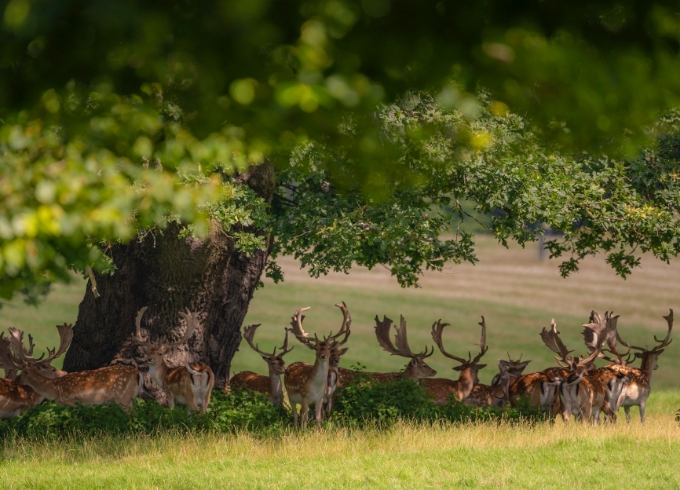The woodlands cover an extensive spread across the county, offering a rich diversity of habitat and species. The woodland types range from the traditional coppice with standards, woodland and include commercial conifer broadleaved mixtures, continuous cover systems and minimum intervention woodlands.
The woodlands offer a complete range of multi-purpose benefits from recreation and amenity to conservation and timber production.
Environmental matters are at the forefront of all our woodland work. Such a wide range of diverse habitats provide sanctuary to a rich diversity of wildlife. Hatfield Park Woodlands not only enhance biodiversity and provide sustainable timber resources for the estate but they also offer a range of other benefits:
Permissive and public access recreation opportunities Reduction of carbon emissions by acting as a carbon “sink” Enhance most of the landscape.
Assist in improving physical and mental well being
The Deer Park
There have been deer parks at Hatfield Park since the 13th century when the park was under the control of the Bishops of Ely. The two main deer parks were known as Innyings Park and Middle Park. A survey taken while Princess Elizabeth was living in the Old Palace in 1551 shows a total of 145 deer. These were probably fallow deer. When Robert Cecil was building Hatfield House in 1610 he purchased fourteen red deer from Lincolnshire and from then on the parks held both fallow and red deer. In medieval times deer parks were used mainly as venison farms and for hunting. By 1624 the number of deer had risen at Hatfield to 626 animals. Fallow deer are known as bucks and does, whilst red deer are stags and hinds.
Sadly, due to necessity, most of the herd was culled during the First World War. However, the family were keen to see deer back again at Hatfield and in the mid 1990’s a new deer park was created on the South Front. The first consignment of deer arrived in January 1997 from Buxted Park in Sussex, followed by others from Surrey, Cumbria and Norfolk. Today the deer herd averages around 160 in number.
All the deer are of a variety known as menil fallow. This strain has been used in deer parks for centuries due to their beautiful light colouration. By selecting animals from all over England we were able to provide a diverse gene pool for the future.
The deer provide a beautiful complement to Hatfield Park and can be viewed from the South Front viewing gallery.

